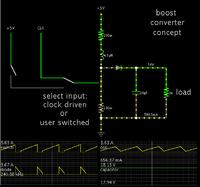levnu
Full Member level 2
where can i find the lowest possilble such boost?
what will be its total thickness?
if the inductor is the highest component can i replace it with few low profile inductors in serial?
if yes what will be the lowest profile boost that i can achieve?
the efficiency of the boost is not importent for me!
what will be its total thickness?
if the inductor is the highest component can i replace it with few low profile inductors in serial?
if yes what will be the lowest profile boost that i can achieve?
the efficiency of the boost is not importent for me!
